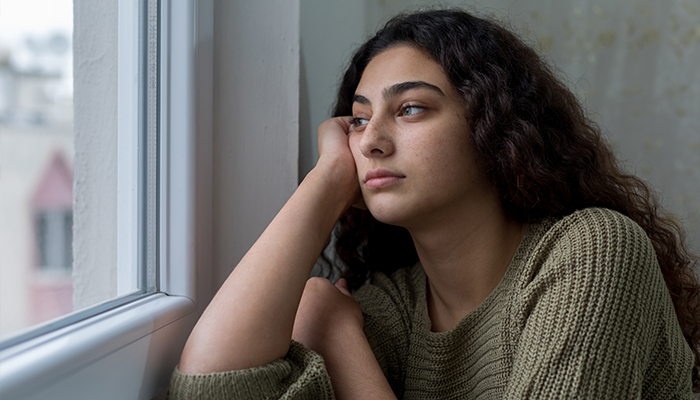HOW CAN WE HELP YOU? Call 1-800-TRY-CHOP
In This Section
Depression on the Rise in Adolescents During COVID-19 Pandemic

Adolescents experienced increased depressive symptoms during the pandemic.
From school closures to disruptions in routines to concerns about illness, the COVID-19 pandemic caused many stressors for adolescents. Researchers from Children’s Hospital of Philadelphia confirmed that this distress took a toll: Adolescents reported increased depressive symptoms and suicidality during the pandemic.
The increase was especially pronounced about females, non-Hispanic Black, and non-Hispanic White adolescents, according to the findings, which appeared in Pediatrics.
“Mental health screening is part of routine clinical practice in pediatric primary care, and mental health concerns among adolescents have increased in recent years,” said Brian Jenssen, MD, MSHP, a primary care pediatrician in the Division of General Pediatrics at CHOP. “We wanted to understand how the COVID-19 pandemic impacted mental health in adolescence, so we examined changes in positive screen from before to during the pandemic.”
The study took place in the CHOP primary care network, which provides care to more than 300,000 children and adolescents. The researchers used electronic health record data from all preventive visits by adolescents age 12 to 21 years who visited the CHOP primary care network between June 1, 2019, and December 31, 2020. The pre-pandemic period was June to December 2019, and the pandemic period was June to December 2020.
The percent of adolescents who screened positive for depressive symptoms increased from 5 percent to 6.2 percent from the pre-pandemic to the pandemic period. Positive suicide risk screens also increased, from 6.1 percent to 7.1 percent.
“This increase of one point may seem like a small number,” Dr. Jenssen said. “But the primary care network has 60 to 80 thousand adolescents, so that one percent translates to nearly a thousand more kids experiencing depressive symptoms. That’s a lot.”
Dr. Jenssen noted that although the study wasn’t designed to determine the exact cause of the increased depression, it’s difficult to ignore the pandemic, particularly its disruption on children’s routines.
“There are three main treatment options for mental health-related conditions, and most people know about two: medication and counseling,” Dr. Jenssen said. “But one treatment that many forget the importance of is routine. This pandemic pulled routine away from a vast majority of adolescents, which likely had a profound effect on them.”
Dr. Jenssen hopes the research paper draws attention to mental health among adolescents and encourages pediatricians to think more about mental health treatment.
“It’s an ongoing struggle, and we need to draw attention to it, and we need to have resources to handle it,” he said. “We should rally those resources and get a jump on this right now.”
Dr. Jenssen and colleagues from The Possibilities Project at CHOP conducted the study. The CHOP team also included Alex Fiks, MD, MSCE, director of the Possibilities Project; Stephanie Mayne, PhD, MHS; Chloe Hannan, MS; Jami F. Young, PhD; Mary Kate Kelly, MPH; Maura Powell, MPH; George Dalembert, MD, MSHP; and Katie E. McPeak, MD.